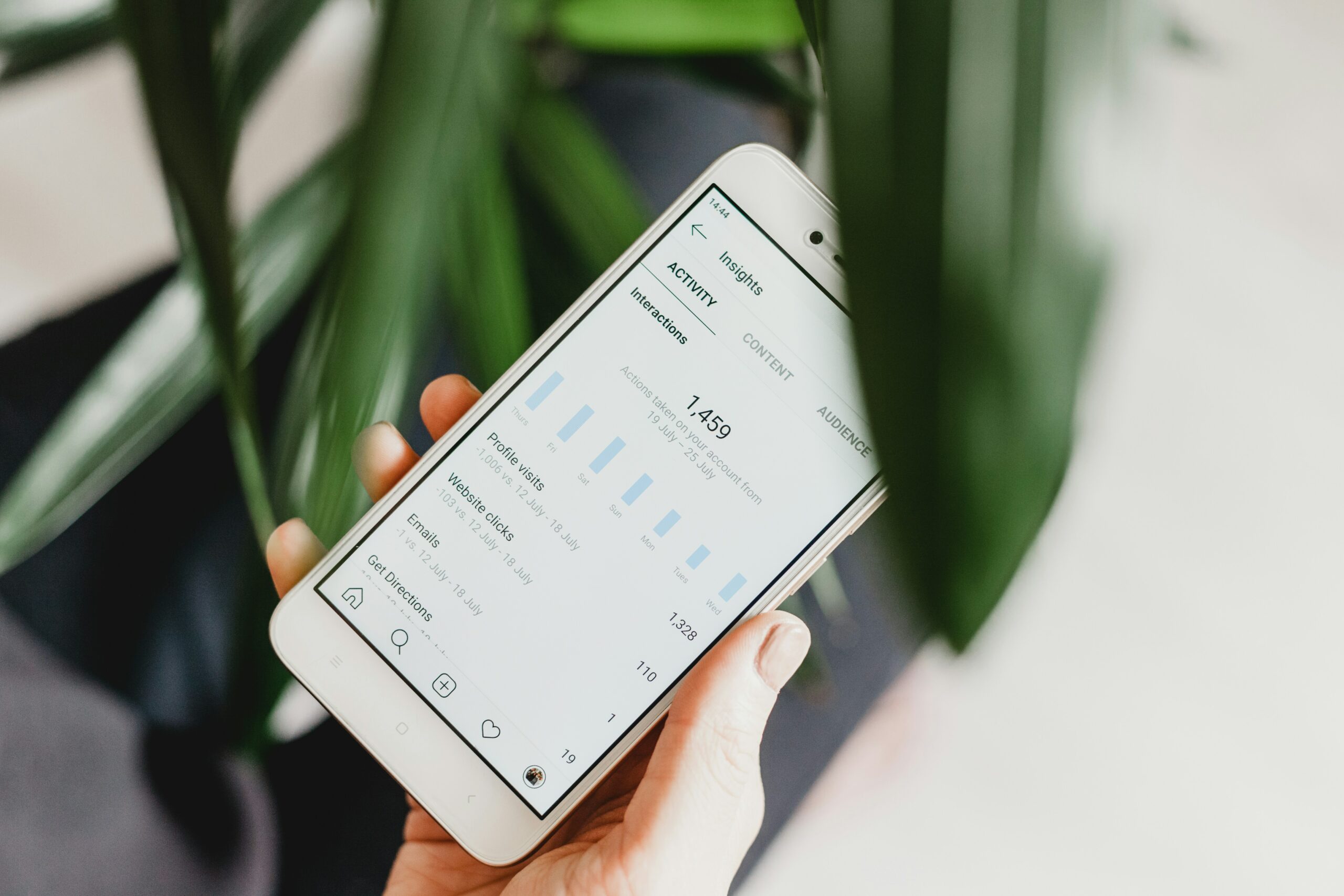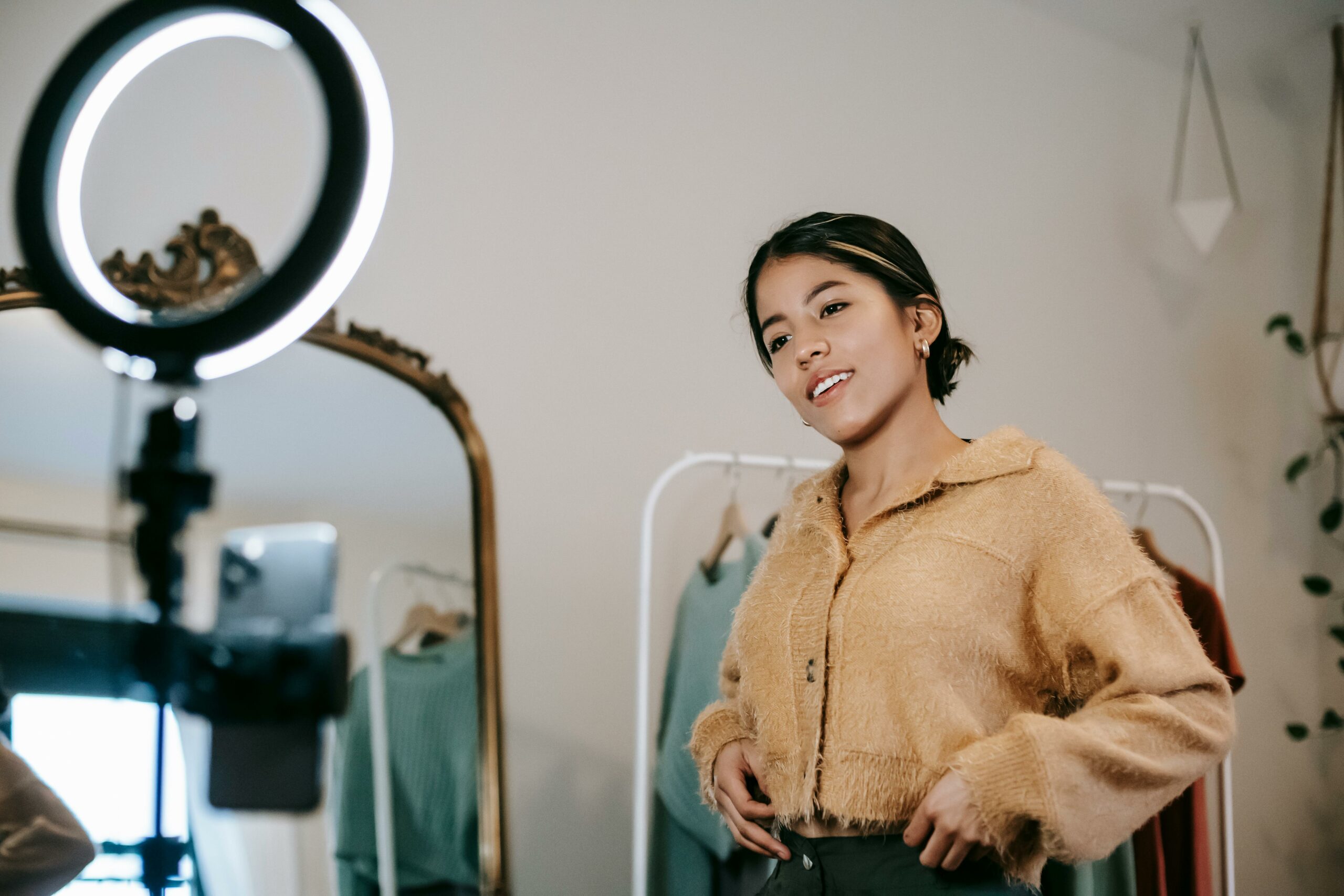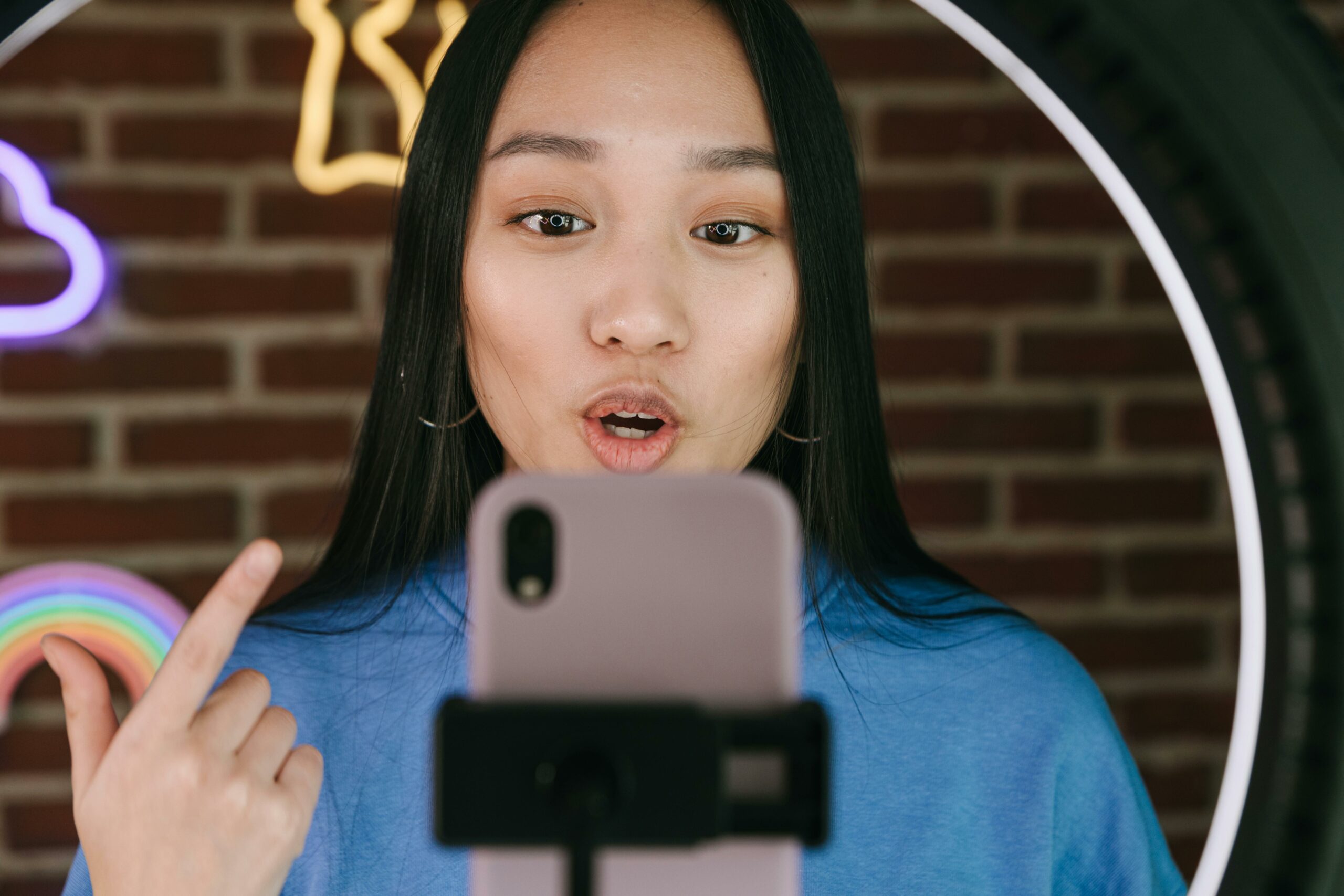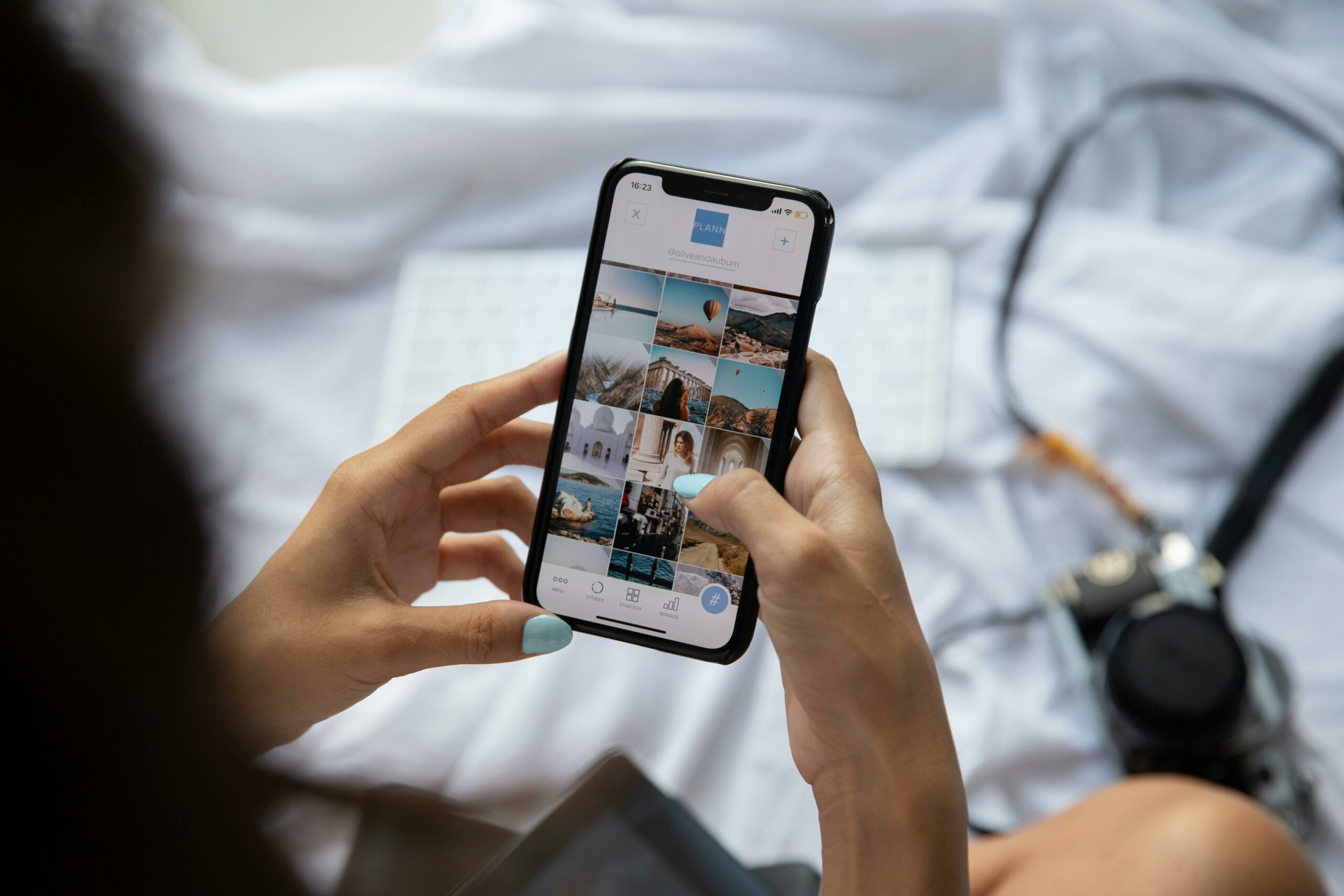

Have you heard about de-influencing? It’s the new trend hitting social media by storm. While influencer marketing has become a crucial component of many brands’ social media marketing over the last decade, trends are shifting, and digital marketing is having to shift with it.
The new trends in consumer habits alongside the current economic and social climate have born a new age of transparent and honest influencers, de-bunking popular products and suggesting that people cut down on their consumption. Rather than fighting back this trend, it’s time that brands get on board and monopolise on the trend.
What is influencer marketing?
Influencers started to blow up in the late 2010s in the age of YouTube as popular bloggers started going viral. From there we saw a boom in influencers on Instagram showcasing a perfect lifestyle. Brands began seeing the power of influencing and collaborating with these internet stars to promote products. With the increase of attention on personalisation and a receptive and direct audience, it meant brand visibility and conversion rates improved too. Influencer marketing has proven to be extremely cost-effective.
Plus, with a much higher ROI than other strategies and the ability for brands to be adaptable with the campaigns, it can work with most budgets too successfully. While some influencers collaborate with brands on a paid basis, others work on barter or an affiliate model, providing unique cost structures that favour both the brand and the influencer.
The rise of TikTok meant the industry saw many more micro and nano influencers who niched down effectively. For brands, these niches are treasure troves. You can find your direct target audience by utilising a well-known and trustworthy influencer. This trust and personalisation are part of the reason that it’s so effective.
People build relationships with their favourite influencers – especially those with smaller audiences who they feel they can have more communication with. These relationships then work to the benefit of the brands as recommendations are more likely to be taken.
A micro-influencer has an average engagement rate of 7% compared to 1-3% of all influencers and a study by ExpertVoice claimed that 82% of consumers are highly likely to follow a micro-influencers recommendation. In 2024, even popular drinks brand LaCroix collaborated with influencers with less than 1000 followers.
The industry exploded. In 2022 more than 50 million people considered themselves to be influencers and investments in the creator space totalled $5 billion in just one year. It’s still big business. In 2024, 67% of markets have claimed they will increase their spending on influencers and 23% will allocate almost half their spending on influencer marketing.

So, are influencers really on the decline?
Yes – in a way. The issue lies with the public perception influences changing. While they were regarded with an air of authenticity and trust, the proliferation of influencers lying about products or taking on many brand deals at once has caused a lot of people to lack faith in what they’re saying. Recent controversies like Mikayla Nogueira (a makeup influencer on TikTok who has been caught in a scandal showcasing a L’oreal mascara while wearing false lashes) have caused consumers to grow wary of trusting the opinions of influencers who make a living from these deals.
This comes in combination with a wider influencer fatigue. As the concept of an influencer became popular over the last 15 years, we’ve seen many who fit the cookie-cutter influencer style, producing very similar content and working with many of the same brands. Findings from Bazaarvoice showed that in 2018 47% of consumers were concerned with the repetitive nature of influencer content and 62% of consumers felt that influencer content took advantage of impressionable audiences by being too materialistic.
Since then, the tide has continued to turn, as parody accounts making fun of these influencers have popped up and become extremely popular. Influencer fatigue is real and is starting to put the entire industry at risk.
It’s also a generational problem. While in 2006 when YouTube was launched, most internet users were Gen X or early millennials, the biggest players on social media now are Gen Z and younger millennials who have very different approaches to content. Gen Z have grown up in the age of the internet, meaning they have been exposed to influencer content their entire adult lives. There’s a growing demand for authentic content and meaningful engagement.

The changing face of social media and influencer marketing
This transition has led to a call for honesty and transparency in content. While much of PR has been about hiding the bad and promoting the good, we’re watching a shift as consumers want the transparency of brands acknowledging negativity or controversy, rather than just ignoring this. This attitude is reflected in their approach to creators and influencers as well. When Mikayla Nogueira faced recent controversy for their TikTok collaborations, many viewers and news outlets were calling for her to publicly address it rather than just continue creating content.
Value-based purchasing and environmentalism
But that’s not the whole story of why influencer marketing is changing. Much of it comes down to a shift in morals and value-based purchasing. Consumer trends change rapidly but there has been a continuous move within the last decade towards more sustainable choices, and especially with the Gen Z demographic who are now in their late teens and 20s with higher purchasing power than before, we’re seeing a focus upon buying choices that make them feel morally good. This has been translated into an emphasis on sustainability, ethical practices from businesses, renewable energy, and more eco-conscious materials.
This is a part of the continued emphasis placed on the ethics of business to gain control in a rapidly shifting world. Post-pandemic, young Gen Z customers with newly acquired freedom and purchasing power are struggling to assert themselves. Additionally, we’re seeing many millennials and Gen X customers who have a sense of moral responsibility for the state of the planet and current environmental issues, causing more consciousness for the businesses they’re supporting and their environmental stance. Kantar Monitor tracing reported that 80% of consumers globally “make an effort” to buy from companies that support causes close to the consumer’s heart. They’re turned off by brands who greenwash or even greenhouse – and just fuse to publicise their net zero targets or sustainability actions.
Consumers don’t want to purchase with such reckless abandon anymore and influencers who are constantly promoting new products or showcasing expensive hauls are no longer relatable, meaning they become as impactful as a marketing tool as celebrities – who consumers see as out of touch and lacking authenticity.
Economic uncertainty and purchasing choices
It’s undeniable that the current economic climate plays a role in the purchasing decisions of consumers as well. When faced with harsher economic conditions, spending on non-necessities and luxury items decreases. While costs of living continue to rise, and the economy is in flux, consumers want control over what they’re choosing to spend their money on – especially luxuries – and will seek out specialty products and services. Controlling or placing moral and ethical restrictions on what they’re purchasing is a part of trying to regain a sense of control due to the political and economic state of the world.
We’ve seen rampant overconsumption over the last few decades, especially on social media platforms such as TikTok where videos of shopping hauls go incredibly viral, inspiring people to spend their money on large orders and the newest products – if you don’t believe us, go google the Sephora craze for young teens at the minute! Influencers certainly have influenced spending. But people are noticing how damaging that can be, both environmentally and on their wallets. When purse strings tighten it can be hard to still consume this content, meaning less views on the videos, and less money to both the brands and influencers.

The rise of de-influencers
So, what’s a de-influencer and where do they come into this conversation?
Some social media content creators have responded to these issues and the changing tide of public conversation by almost becoming anti-influencers. Instead of working with brands to encourage viewers to purchase products, they’re actively encouraging viewers not to buy these products.
Anti-hauls and videos exposing popular products are successful on social media at the minute, as are more sustainable purchase options that will save money in the long run and are usually better for the planet and more ethically produced.
It’s a really refreshing approach for many viewers who are fatigued with overconsumption and the luxurious, expensive lifestyle of creators. It’s obviously striking a chord with viewers as in 2023 TikTok posts under the hashtag #deinfluencing hit more than 750 million views. As the trend continues to rise, so does the attention on these videos and de-influencers as a whole.
How do we know that the trend is actually having an impact on brands and influencer marketing when marketers are continuing to increase spending on influencers?
Research conducted by The Drum showed that trending de-influencer TikToks negatively impacted both brand favourability and purchase intent among participants when conducting randomized controlled trials for two viral products (The Dyson Air Wrap and the Stanley Quencher Tumbler).
They witnessed a 20-point dip in brand favourability due to influencer posts, showcasing massive impact.
The utilisation of de-influencers for brands: Is this the death of influencer marketing?
Not every de-influencer post encourages consumers to turn their back on purchases though.
Many popular de-influencer posts will simply debunk popular products, exposing poor quality, bad customer service, or even just showcasing alternatives that are more affordable and a better choice. A rejection of influencer culture doesn’t have to mean a rejection of consumption altogether. Instead, much of the public is just looking for more thoughtful and intentional purchases.
Instead of using influencers on a large scale to drive purchases, regardless of the content produced, brands should pay attention to consumer sentiment online.
Using these videos as a way of gauging consumer opinion of your products and your brand can be an incredibly important communication tool, allowing you to respond quickly. Additionally, it offers opportunities for community engagement, working reactively to these posts and joining the conversation, making your brand appear authentic and genuine.
Change your perspective – they’re giving you a chance to showcase the benefits of your products and your brands in comparison to more problematic or evasive brands and prove why consumers should make intentional purchases from you. If your brand is actively engaging in ESG reporting and providing great quality products, you’re not likely to be mentioned by these de-influencers directly.
It’s also important to understand that while this is a current trend, it doesn’t mean that it’s an indication of the complete downfall of influencer marketing. Marketers are still investing in the strategy and influencers are continuing to earn money and grow their fanbase online.
Trends come and go and while this one might make viewers reconsider their consumption and behave in more ethical ways, it doesn’t mean they won’t continue to buy with recommendations from their favourite creators. Focus on your current influencer strategy by working with creators who are engaged, authentic, and transparent about your relationships.
The future is uncertain and while the writing is on the wall for influencers promoting overconsumption, it’s difficult to see the direction of the industry in a sector as new and constantly evolving as special media. For now, de-influencers are big news, and your brand shouldn’t be ignoring them and continuing with your influencer marketing strategy like nothing is happening. Be aware, be cautious, and make sure you’re playing by the rules.

Interested in learning more? Get in touch to discuss all things influencer marketing and PR now with our expert team.



Share this on: